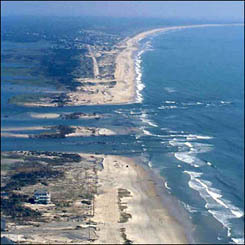
- Capital City:
- Richmond
- Nickname:
- Old Dominion
- Motto:
- Sic Semper Tyrannis (Thus Always to Tyrants)
- Statehood:
- June 25, 1788 (10th)
- Origin of state's name:
- Named for England's "Virgin Queen," Elizabeth I
- Largest Cities:
- Virginia Beach, Norfolk, Richmond, Chesapeake, Newport News
- Border States:
- Kentucky, Maryland, North Carolina,Tennessee, West Virginia
- Land Area:
- 39,598 sq. mi., 37th largest
- State Bird:
- Cardinal
- State Flower:
- Dogwood (cornus florida)
- State Tree:
- Dogwood (cornus florida)
- State Song:
- Carry Me back to Old Virginny
The Virginia Company founded the first permanent English colony at Jamestown in 1607. One of the original 13 states (it entered the Union in 1788), Virginia was named for Elizabeth I, the Virgin Queen of England. Virginia holds an important place in American history, as it was home to many of the founding fathers, including George Washington, Thomas Jefferson, James Madison, George Mason, and Patrick Henry. Four of America's first five presidents were Virginians. During the Civil War, Richmond, Virginia's capital, was the capital of the Confederacy. Today, Virginia is a popular tourist spot where people can visit historic places such as Alexandria, Williamsburg, and Mount Vernon, George Washington's estate. Dogwood is the state flower and the cardinal is the state bird of the "Old Dominion."
Virginia Peach Festival
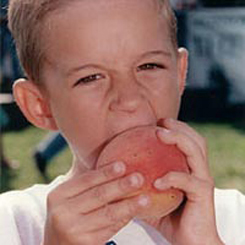
Peaches were already a cultivated crop in what would become Patrick County when English settlers first arrived in Virginia. Referring to the peach trees planted by Native American Indians, the first European land survey at the site in 1748 called the area "Peach Tree Bottom." From a shaky start in early 1930s, the commercial peach orchards have grown to have a significant impact on the economy of the county. In early 1988, the Patrick County Chamber of Commerce devised the idea of a peach festival to promote local agricultural products, offer fun and entertainment to area citizens, and help the Chamber to become self-sustaining. The first festival, held on August 10, 1988, attracted a crowd of 800 people, including Governor Charles Robb, who enjoyed peach cobbler and peach ice cream. In recent years, the festival has featured live entertainment, and attracted local artists and craftspeople, who display and sell their work. Games, face-painting and pony rides delight the youngsters. Documentation includes a history of the peach festival and the Patrick County Chamber of Commerce, photographs, newspaper clippings, and promotional materials.
Alexandria Scottish Christmas Walk
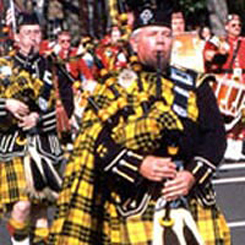
On the first Saturday in December, Old Town Alexandria is transformed by the sight of colorful tartans representing Scottish clans, light-footed country dancers, and the mournful wail of bagpipes. More than 30,000 people attend the festivities that are organized by 200 volunteers.
The Scottish Christmas Walk has grown from a small and informal parade to an entire weekend filled with events and festivities for all ages. The parade was begun in 1969 by the Alexandria Community Y (now known as the Campagna Center) to kick off the holiday season with a celebration honoring the city's Scottish founders, its rich heritage, and unique quality of life.
In 1669, Scotsman John Alexander purchased the land that is now present-day Alexandria and laid plans for a thriving port. Shipping merchants, led by Scotsmen William Ramsey and John Carlyle, helped establish the town, incorporated in 1749 and named Alexandria in honor of John Alexander. Other Scottish merchants and business people continued to settle in this dynamic colonial seaport.
Over the years, the original six units of bagpipers have grown to 125. Also marching in the parade are Scottish military regiments, highlanders, school bands, citizen groups and associations. The grand marshal leads the regal clans and floats filled with volunteers and children, who participate in Campagna Center programs; dignitaries, who often include the Lord Provost of Dundee (Alexandria's Scottish sister city) and the British Ambassador to the United States, and local and regional political leaders, who ride in vintage cars loaned by antique car club members. Traditionally, as the parade passes, the crowd joins in at the end to walk the route to city hall for a short ceremony where everyone is welcomed and encouraged to participate in the weekend's activities in Old Town, and to visit the Campagna Center.
The late Elizabeth Anne Campagna, with a group of friends and associates, began the Christmas Walk. She is remembered as a passionate, visionary leader who always saw the best in people and opportunities to make things better. The Campagna Center serves the most vulnerable members of the community- its children-through programs and outreach activities, which include Head Start, a before-and-after school care program, a shelter, and a volunteer program for seniors.
The St. Andrew's Society of Washington, D.C., has been a major participant in the Scottish Christmas Walk since it began. The society was founded by William Hunter at Alexandria's Old Presbyterian Meeting House in 1760. As a charitable and social organization, the society's was formed to provide assistance to Scots, lineal descendants of Scots, their widows and orphans, and to perpetuate Scottish traditions and culture.
Documentation includes a text report on the walk; a 1999 catalogue and brochure of the Scottish Walk parade and weekend events; the Campagna Center 1999 annual report; and a video of the Campagna Center's Scottish Christmas Walk.
Virginia Sports Hall of Fame and Museum
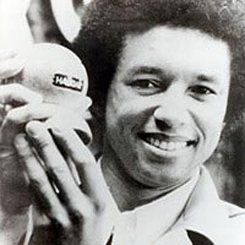
Founded in 1972, the Virginia Sports Hall of Fame in Portsmouth was designated the commonwealth's "Official Sports Hall of Fame" in 1996 by the state General Assembly. It is one of sixteen state sports halls of fame in the country.
The Virginia Sports Hall of Fame showcases nineteen sports, which include tennis, golf, bowling, basketball, and horse and auto racing. By year 2000, the hall of fame had honored 183 champions, hailing from every area of the state. These inductees include thirty-four National Hall of Famers; two Sports Illustrated 's All Century Pro Football team members, Willie Lanier and Dwight Stevenson; golfer Sam Snead, who was named one of the Top 100 North American athletes of the 20th century by ESPN; and Paul Mellon, one of four exemplars of racing, and a member of the English Jockey Club Hall of Fame.
The museum's sports memorabilia is one of the most outstanding collections in the country. Items include tennis great Arthur Ashe's racquet; the game ball from the 1903 football match between Virginia Tech and Navy; Bobby Ross' Coach of the Year award received when he was with the San Diego Chargers; and PGA Hall of Famer Sam Snead's signature straw hat.
Documentation includes a report on the legacy, description of each inductee, museum brochures, a video, and 30 photographs of inductees.
The National Tobacco Festival
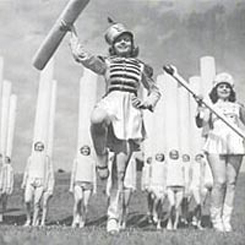
Tobacco has been a major staple of the economy of Halifax County and the state of Virginia since 1700. Originating in 1935 in the small town of South Boston, the National Tobacco Festival was conceived by two local businessmen as a way to promote the superior quality of the local leaf. The first festival queen was Miss Westwood Byrd, daughter of U.S. Senator Harry Flood Byrd. The three-day festival featured pageants, parades, beauty queens, band competitions, clogging and fiddling contests, and Hollywood stunt men performing daring feats. Believing that it had outgrown the small town of South Boston, its organizers held the last festival in South Boston in 1941, the next year moving it to Richmond. Project documentation includes photographs, a report describing the history and significance of the festival, original festival programs, a pageant script, newspaper clippings, and a videotape, Tobacco Festivals, 1935-1941, assembled from old 16 mm film clips.
Historic Garden Week in Virginia

Historic Garden Week in Virginia, which is often called "America's Largest Open House," is the oldest and largest statewide event of its kind in the nation. Each year, during the last full week of April, forty-seven member clubs of the Garden Club of Virginia organize approximately three dozen house and garden tours across the state, opening more than 250 of Virginia's finest homes, gardens, and historic landmarks. These properties have included elegantly renovated townhouses with walled gardens, expansive country and suburban estates, farmhouses on picturesque winding roads, and seaside villas. Many of the dwellings have intrinsic historic interest, dating from the American Revolution, the Civil War, and the Victorian era. Tour proceeds benefit the restoration of historic gardens and grounds throughout the commonwealth.
The idea for historic garden week came from a large flower show at Monticello in 1927, held as a fundraiser to save Thomas Jefferson's estate's old trees. The event raised $7,000. When garden club members were asked in 1929 to raise money to landscape the grounds of the historic Kenmore estate in Fredericksburg, which had been the home of George Washington's sister, Betty Washington Lewis, they felt confident they could. Members invited their friends throughout the state and nation to visit Virginia during an eleven-day home and garden tour. Illustrations, historic information, and a map were provided in a special garden tour hardback guidebook. This first Historic Garden Week was a major success, exceeding $14,000.
Garden Week has been produced every year since 1929, except during World War II. The statewide event attracts 40,000 to 50,000 people from all over the United States and abroad. Some visitors come on tours, which have been museum boards, other garden clubs, embassies, educators, and other special interest groups. Garden Week has become a significant player in Virginia's travel industry, and is promoted by the Virginia Tourism Corporation.
As one of the state's largest volunteer efforts, Garden Week is produced by more than 3,000 club members, 200 homeowners, and hundreds of friends and other supporters. Restoration programs are announced at the Garden Club's May meeting. The club's restoration committee evaluates requests for new projects and oversees earlier projects at more than three dozen historic restoration sites.
 Print
Print Email
Email







